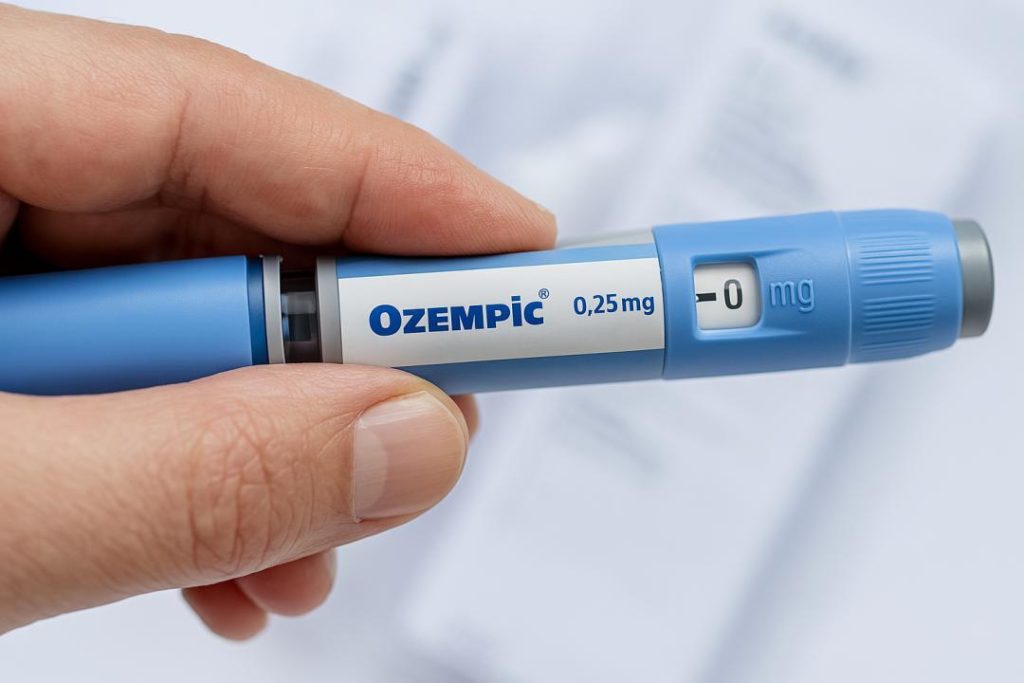
Are Weight Loss Drugs Harming Your Muscles?
When it comes to weight loss, many people are willing to try just about anything to achieve their goals. However, with the rise of prescription weight loss drugs, it’s essential to understand the potential risks and benefits of these medications. Two popular weight loss drugs, semaglutide and tirzepatide, have been shown to be effective in reducing fat, but they can also have a surprising side effect: lower muscle mass.
As we age, it’s natural to experience some loss of muscle mass, a condition known as sarcopenia. However, when this loss occurs too quickly or is exacerbated by certain medications, it can lead to weakness, fatigue, and a significant decline in overall health. In this blog post, we’ll explore the relationship between weight loss drugs and muscle mass, and discuss the experts’ recommendations for preserving muscle health.
What are GLP-1 receptor agonists?
Before we dive into the topic of semaglutide and tirzepatide, let’s take a step back and understand what these medications are. GLP-1 receptor agonists are a class of medications that work by mimicking the action of a natural hormone in the body called glucagon-like peptide-1 (GLP-1). GLP-1 helps to regulate blood sugar levels and appetite, making it an attractive target for weight loss medications.
Semaglutide, sold under the brand name Ozempic, was the first GLP-1 receptor agonist approved for weight loss. Tirzepatide, sold under the brand name Mounjaro, is a newer medication that has been shown to be even more effective at reducing fat and improving blood sugar control.
The impact on muscle mass
While semaglutide and tirzepatide have been shown to be effective at reducing fat and improving weight-related health markers, they can also have a negative impact on muscle mass. Studies have shown that these medications can cause a significant decline in muscle mass, particularly in older adults.
One study published in the Journal of Clinical Endocrinology and Metabolism found that semaglutide treatment was associated with a significant loss of muscle mass in older adults with type 2 diabetes. Another study published in the Journal of the American Medical Association found that tirzepatide treatment was associated with a significant decline in muscle mass in patients with type 2 diabetes and obesity.
Why is muscle loss a concern?
Muscle loss is a concern for several reasons. As we age, our bodies naturally lose muscle mass, a process known as sarcopenia. This can lead to a range of negative health consequences, including:
- Weakness and fatigue
- Decreased mobility and balance
- Increased risk of falls and fractures
- Reduced bone density
- Increased risk of chronic diseases, such as diabetes and cardiovascular disease
In older adults, muscle loss can be particularly devastating, as it can lead to a loss of independence and increased risk of disability.
Preserving muscle health
Fortunately, there are steps that can be taken to preserve muscle health while using semaglutide or tirzepatide. Experts recommend combining these medications with strength training and a protein-rich diet to help support muscle health.
Strength training is particularly important, as it helps to build and maintain muscle mass. This can be as simple as incorporating resistance exercises into your daily routine, such as weightlifting or bodyweight exercises like push-ups and squats.
In addition to strength training, a protein-rich diet is essential for supporting muscle health. Protein provides the building blocks for muscle growth and repair, and studies have shown that consuming adequate protein is critical for preserving muscle mass.
Combining medications with strength training and a protein-rich diet
When combining semaglutide or tirzepatide with strength training and a protein-rich diet, it’s essential to work with a healthcare provider to develop a personalized plan. This may involve adjusting the dosage or frequency of the medication, as well as incorporating specific exercises and nutrition recommendations into your daily routine.
For example, a healthcare provider may recommend the following:
- Starting with a lower dose of the medication and gradually increasing as needed
- Incorporating strength training exercises 2-3 times per week, focusing on exercises that work multiple muscle groups at once
- Consuming 1.2-1.6 grams of protein per kilogram of body weight per day, spread out over 3-5 meals
- Incorporating protein-rich foods into your diet, such as lean meats, fish, eggs, dairy products, and plant-based options like beans and tofu
Conclusion
Semaglutide and tirzepatide are effective weight loss medications that can help reduce fat and improve weight-related health markers. However, they can also have a negative impact on muscle mass, particularly in older adults. By combining these medications with strength training and a protein-rich diet, individuals can help preserve muscle health and reduce the risk of weakness, fatigue, and other negative health consequences.
As we age, it’s essential to prioritize muscle health and take steps to preserve muscle mass. By incorporating strength training and a protein-rich diet into your daily routine, you can help support muscle health and reduce the risk of muscle loss.
Source:
https://thepfc.club/blogs/news/what-are-glp-1-receptor-agonists






